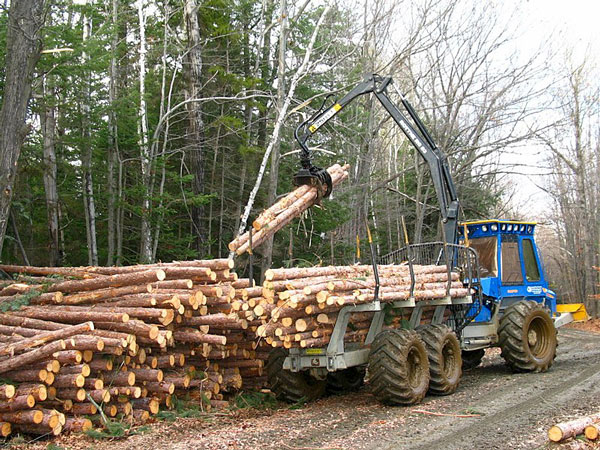Questioning the benefits of incorporating wood into ever-larger construction can feel like swimming against the tide.
Considerable efforts over the past several years have promoted the increased use of mass timber construction through a lens focussed on embedded carbon, environmental sustainability and CO2 reduction.
Another consideration is mental health benefits, what Tye Farrow of Farrow Partners Architects in Toronto calls “the human performance overlay.”
In a January 2023 interview with Treehugger, Tye said wood is very different than steel, glass or concrete, and is perceived by the mind’s eye as being warmer than other materials. He likens it to a walk in the forest.
“What your mind is doing is connecting the dots of everything else in that sensory experience. And so what your mind is beginning to tell you is the last time I was around this wood environment, it was a place that was warm, and I felt warm.”
However, a report released last month titled 2024 Logging Emissions Update questions one of the foundational arguments surrounding the carbon reduction benefits of wood.
Authors Michael Polanyi, Jennifer Skene and Alice-Anne Simard write for several years, the Canadian federal government has failed to report transparently and has significantly understated the logging sector’s carbon emissions in its annual GHG emissions report submitted to the United Nations.
“In 2022, net logging emissions were 147 Mt, making logging the third-highest emitting sector of the Canadian economy after oil and gas (217 Mt) and transport (156 Mt), and a significantly higher emitter than the agriculture (70 Mt) and electricity (47 Mt) sectors.”

Given that logging is the first step in the MTC supply chain, and that LCA examinations say “in practice the eco-costs of forest management is negligible,” the re-statement of logging emissions made in the 2024 report make for important reading.
As the authors say, the logging industry is “a sector that demands maximum transparency and clarity.”
Importantly, the report uses methodology that takes into account that even though carbon is stored in long-lived wood products, the forest floor becomes a carbon emission source for a number of years after trees are harvested as it releases carbon from soil and forest debris.
It is estimated as little as 15 per cent of the initial carbon stored in a live tree is retained in forest products. Burning scrap wood to power timber mills produces 2.5 times more CO2 than natural gas.
Furthermore, the 2024 Logging Emissions Update does not include emissions from the logging industry’s operational use of fossil fuels, leading to what the authors call an underestimation of total carbons.
In fact, carbon emissions associated with logging, and therefore with mass timber construction products, begin when forestry trucks leave the company parking lot. That’s followed by the machinery used for harvesting, transportation back to a mill and on to MTC processing, and final delivery to a building site perhaps hundreds of kilometres away.
Allowing certified logging in primary forests over 100 years old is also a major concern, Dominick DellaSala told Reuters.
“For Canada to claim that it’s doing sustainable management, it’s laughable. To put a certification seal of approval on it is more alarming.”
Drawing attention to its re-calculation of government figures, the 2024 Logging Emissions Update conclusions are strongly worded.
“After many years of portraying logging in Canada as carbon-neutral or a net sink, the federal government has recognized the sector as a net source of emissions. By failing to accurately and transparently report the GHG emissions from industrial logging, Canada is allowing one sector of the economy to freely pollute the atmosphere, thereby increasing the burden of emissions reductions on other sectors and externalizing costs to future generations.”
If the forest’s carbon sequestration capability is truly important to those concerned about carbon emission reductions, perhaps trees should just be left alone. Credible research in the U.S. suggests a mature 120-year-old tree sequesters almost 2.5 times, or an additional 836 kg, more carbon than a 25-year-old tree.
John Bleasby is a freelance writer. Send comments and Climate and Construction column ideas to editor@dailycommercialnews.com.




Recent Comments
comments for this post are closed